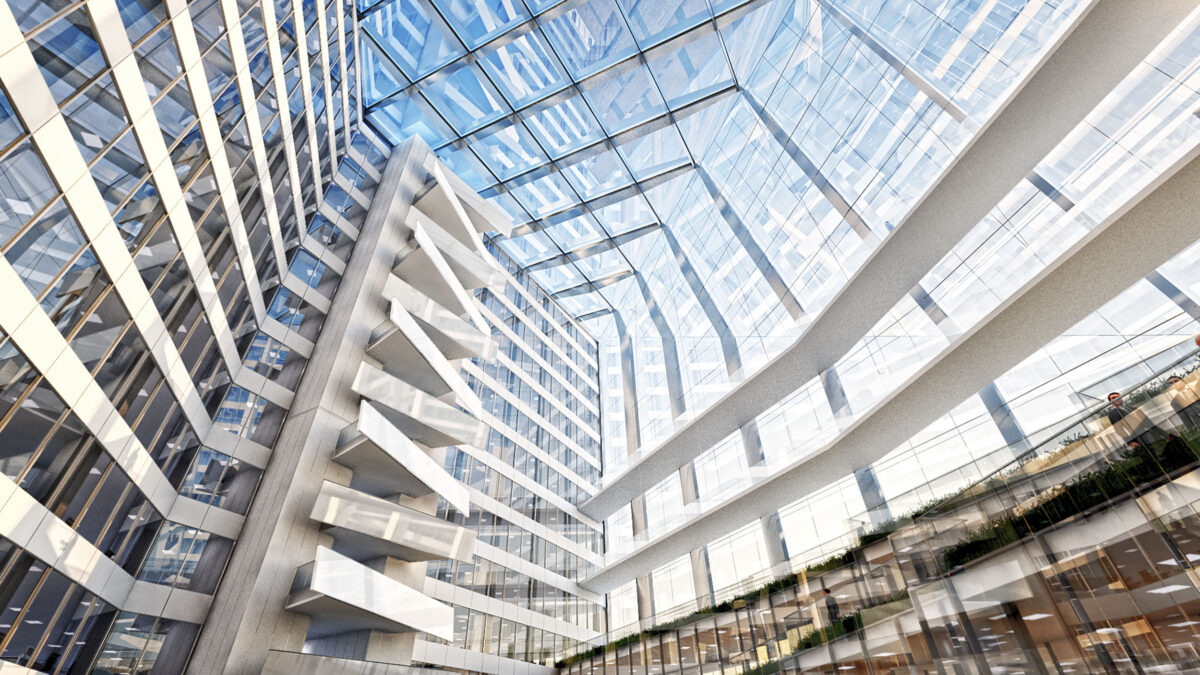Many of us wouldn’t think of buildings as one of the major polluters of our world. Buildings and construction together account for 39% of energy-related carbon dioxide (CO2) emissions (UN Environment 2017). In this number also the energy used for the production of these buildings is taken into account. Besides the significant part that the real-estate industry plays in the worldwide emission of CO2, it is also an attractive industry to invest in. What makes real-estate way more interesting than other sustainability projects is the return on investments compared to windmills or solar panel projects (TEDx 2016).
In this post I would like to address how the Dutch company OVG Real Estate managed to make the most sustainable office building in the world in 2016. To achieve this, not only the most sustainable materials and products must be used in the construction of the building, also a new type of innovation must be implemented. This is a must in order to achieve the title ‘most sustainable building’ according to the measurement system used. OVG Real Estate chose to adopt the technology from Philips, which is Power-over-Ethernet (PoE) (Philips 2020). PoE is the combination of a power cable and ethernet cable in one. This allows data to be sent over a power cable. So besides powering the lights in the office, also data can be collected with sensors and sent to a central computer that analyses it.
This information technology has quite some properties that can be useful in making a building more sustainable. This allows Internet-of-Things (IoT) to be used throughout the whole building and this can offer endless possibilities. For instance, people can be tracked and therefore the building knows exactly where people are and what places have been used the most. This information can be used by cleaning companies, who use a heatmap to see where most of the cleaning must be done (Tedx 2016). Tracking people in the building will also make sure that air flows and warmth will be distributed to the correct places in the building, increasing the air quality and the energy efficiency. Also people can see on their phones where the empty workspaces are, decreasing the problem of empty desks in offices (Tedx 2016). Traditionally all employees would have their own desk, however the current trend is that companies have flexible offices. With the use of IoT, the distribution of these workspaces can be done efficiently. For instance, sensors can measure which desks are being used. Because of this, less workspaces need to be created, which will result in less energy that is lost due to heating and lighting of empty rooms. This technology almost transforms an office building into a service. Where each employee can use the building in the way they prefer by planning their office day in advance. All these properties have contributed to the sustainability score of the building. OVG Real Estate accomplished their mission in making the most sustainable building due to the use of information. These types of ‘smart’ buildings will definitely be something of the future. However it also raises questions of privacy. Do you think the advantages it has on sustainability and efficiency will outweigh the privacy concerns?
Philips 2020, Connected Office Lighting, viewed 8 October 2020, <https://www.lighting.philips.nl/systemen/connected-lighting/connected-office-lighting>
TEDx 2016, Smart cities: How technology will change our buildings | Coen van Oostrom | TEDxBerlin, viewed 7 October 2020, <https://www.youtube.com/watch?v=hT4ZsaZsEgc>
UN Environment 2017, Global Status Report 2017: Towards a zero-emission, efficient, and resilient buildings and construction sector, United Nations Environment, viewed on 7 October 2020 <https://www.worldgbc.org/sites/default/files/UNEP%20188_GABC_en%20%28web%29.pdf>


Hi Tim,
Thank you for sharing this! I wasn’t particularly aware of the fact that buildings and construction acount for 39 percent of the CO2 emissions. Now I know this, I agree with you that real-estate could also be a good investment for sustainability projects. According to your examples, the use of IoT offers a lot of opportunities in making building more sustainaible. Due to COVID-19 many offices spaces are not used for the full capacity anymore and I think the use of IoT could help to reduce the energy consumption in office areas were there are not many people anymore. Next to that, with the use of IoT people can now find out if it’s “safe” (keeping the maximum amount of people in mind) to go to the office before they leave their home. Besides, I think that the use of IoT could also be beneficial in your own home, since energy is also waste when you leave lights and heating on in unoccupied rooms. I get your point that the use of IoT to for example track people could also come with many privacy concerns. However, I think the benefits outweight these and if the technology is only used for the purpose of making building smart instead of “spying on people”, I think there is a green future ahead for the real-estate industry!